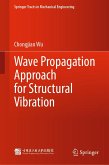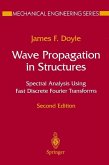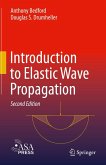This book focuses on wave propagation phenomena in elastic solids modelled by the use of the finite element method. Although the latter is a well-established and popular numerical tool used by engineers and researchers all around the word the process of modelling of wave propagation can still be a challenge. The book introduces a reader to the problem by presenting a historical background and offering a broad perspective on the development of modern science and numerical methods. The principles of wave phenomena are clearly presented to the reader as well as the necessary background for understanding the finite element method, which is the following chapter of the book is viewed from the modeller point-of-view. Apart from the principles the book also addresses more advanced topics and problems including the use of the spectral-finite element method, the spline-based finite element method as well as the problems of undesired and hidden properties of discrete numerical models.
Dieser Download kann aus rechtlichen Gründen nur mit Rechnungsadresse in A, B, BG, CY, CZ, D, DK, EW, E, FIN, F, GR, HR, H, IRL, I, LT, L, LR, M, NL, PL, P, R, S, SLO, SK ausgeliefert werden.









